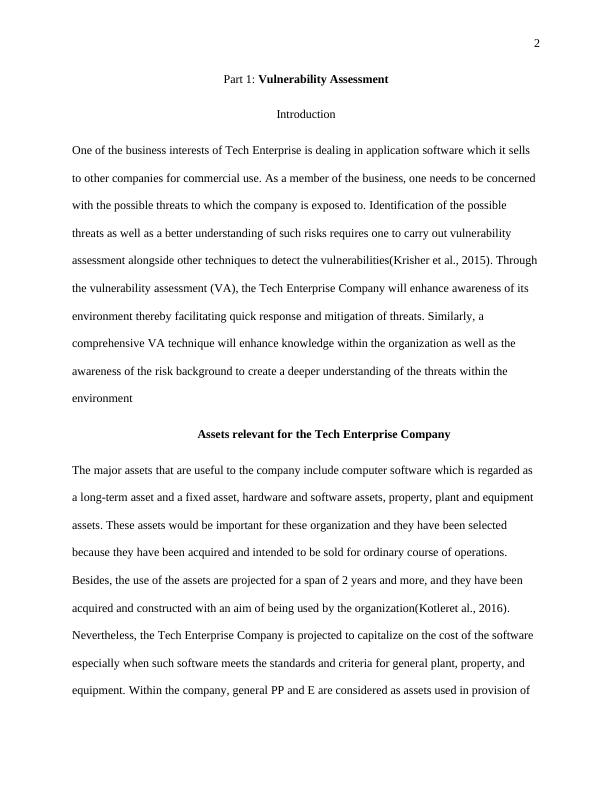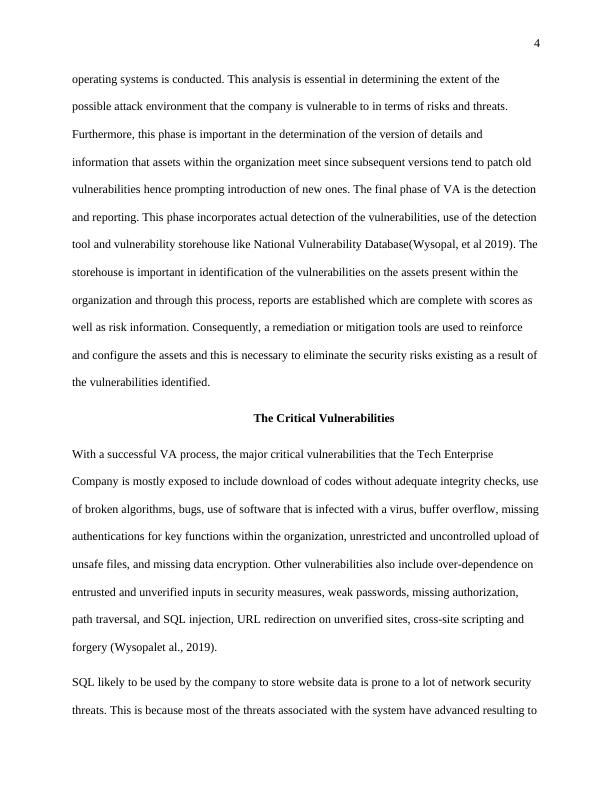Introduction to Risk and Due Diligence
This assignment requires students to conduct a vulnerability assessment and develop precautionary recommendations for an organization, project, or site of their choice.
12 Pages3152 Words385 Views
Added on 2022-11-01
About This Document
This document provides an introduction to vulnerability assessment and precautionary analysis for Tech Enterprise Company. It identifies critical vulnerabilities and recommends measures to protect assets from possible risks. The document also provides expert guidance on Desklib.
Introduction to Risk and Due Diligence
This assignment requires students to conduct a vulnerability assessment and develop precautionary recommendations for an organization, project, or site of their choice.
Added on 2022-11-01
ShareRelated Documents
End of preview
Want to access all the pages? Upload your documents or become a member.
IT Security: Enterprise Technical Infrastructure Security Plan and Risk Assessment for Uber
|5
|764
|99
Cyber Security Assessment 20222
|9
|1846
|19
Cyber Security Applied Research 2022
|8
|2211
|24
Network Security Assessment: Part 1 - Vulnerabilities Assessment
|9
|1577
|381
Network Security Assessment: Part 1 - Vulnerabilities Assessment
|9
|1749
|483
Network Security & Its Vulnerabilities | Document
|9
|1749
|130




